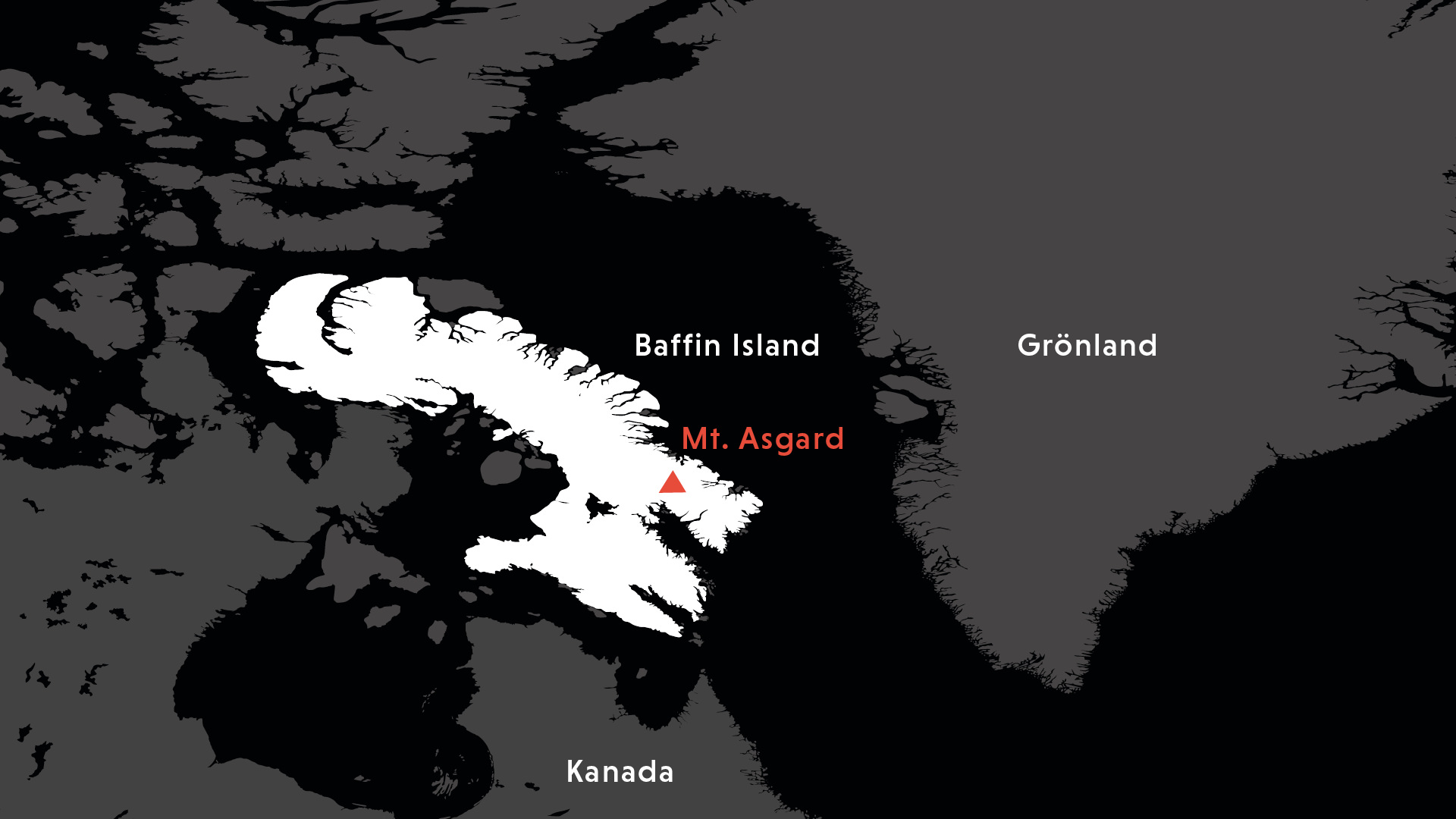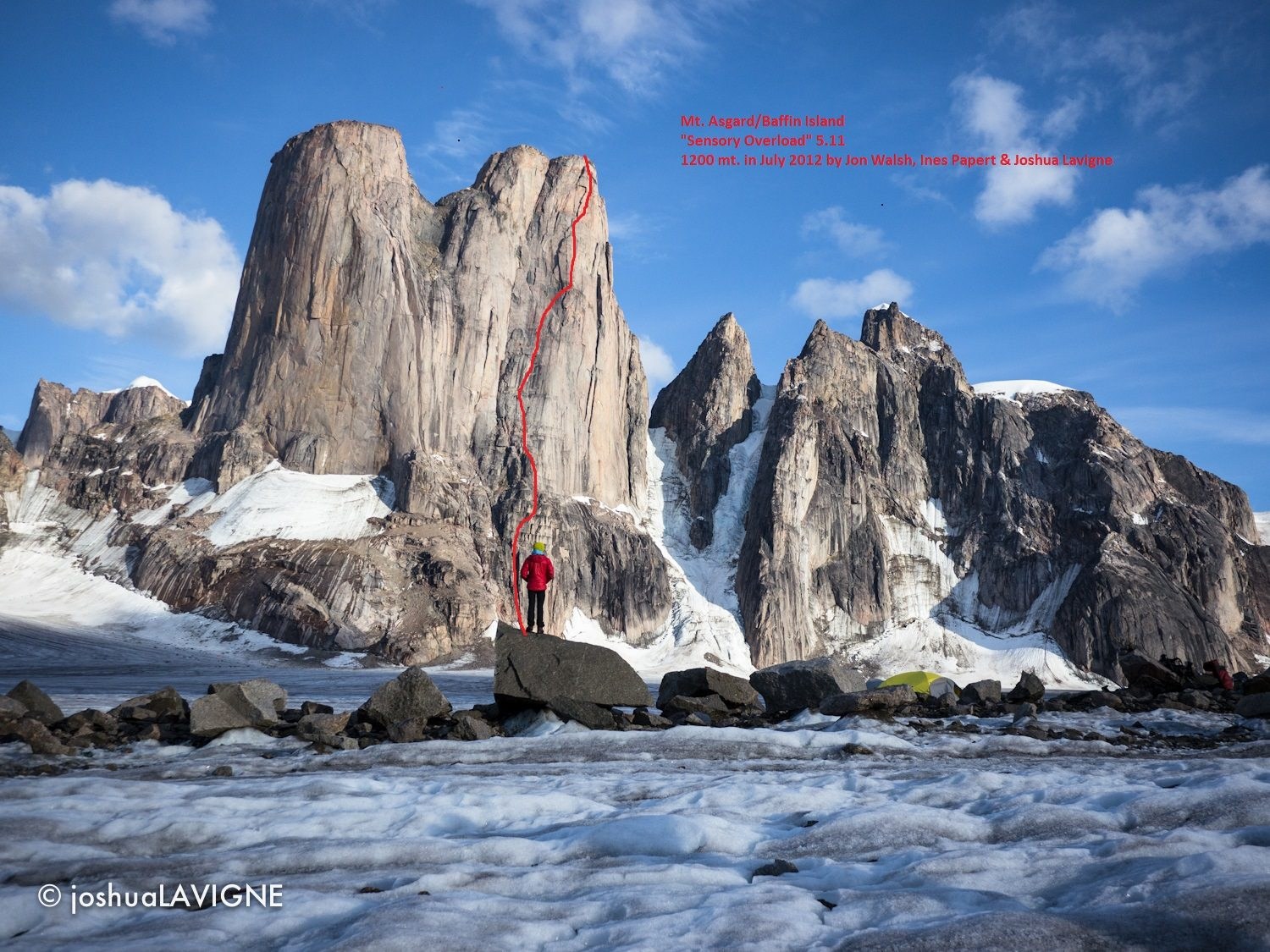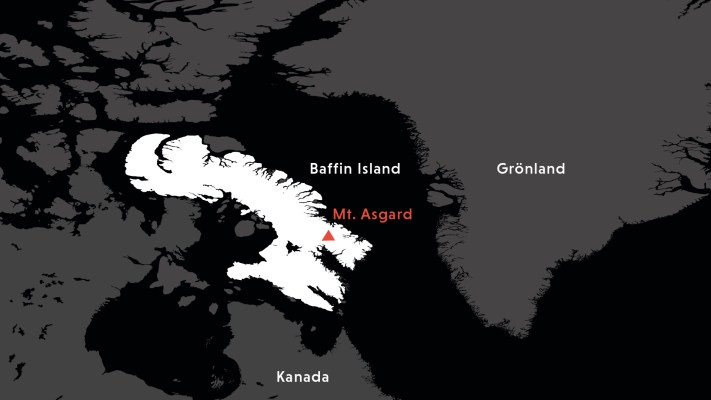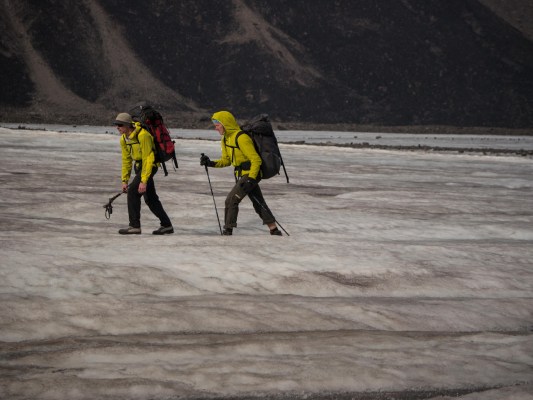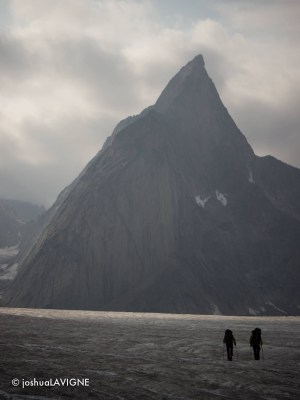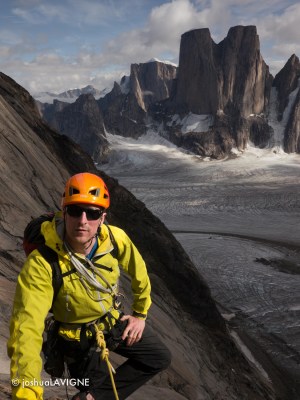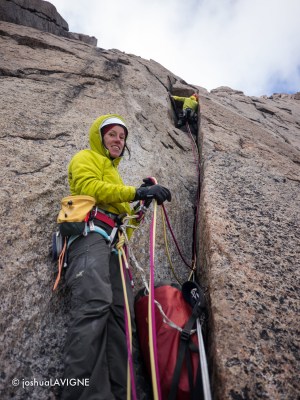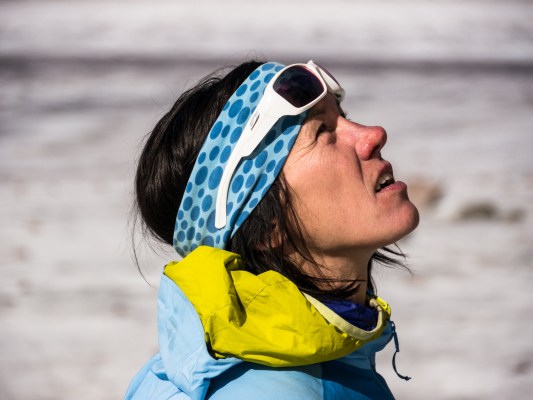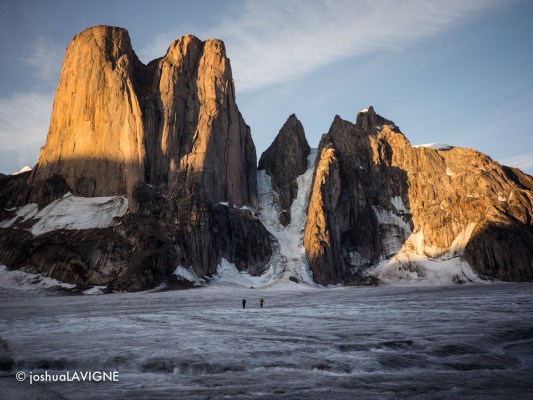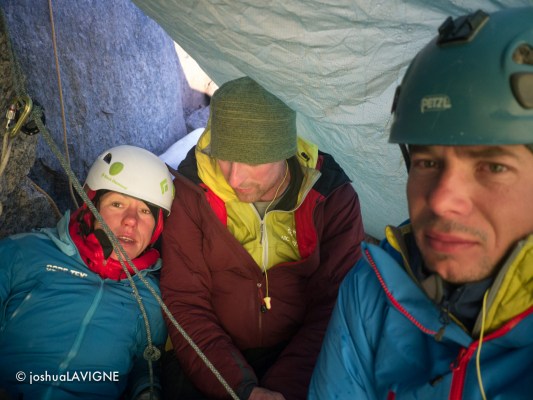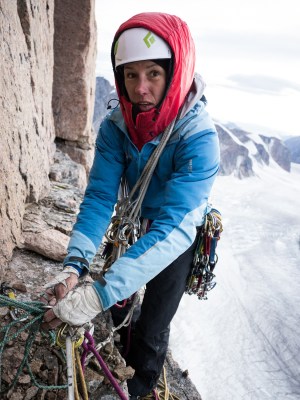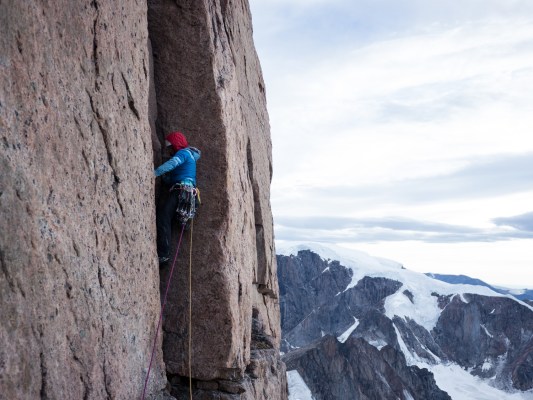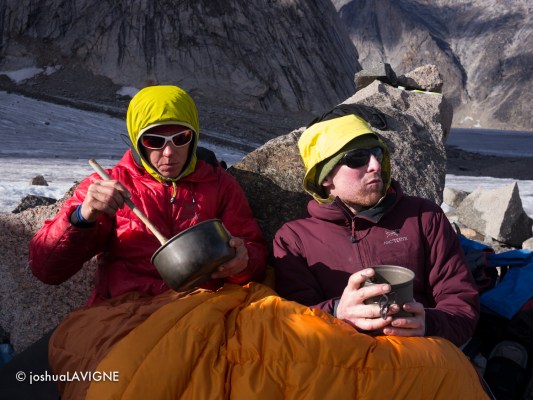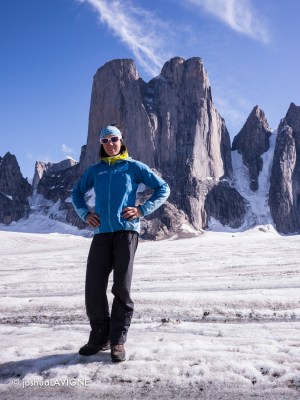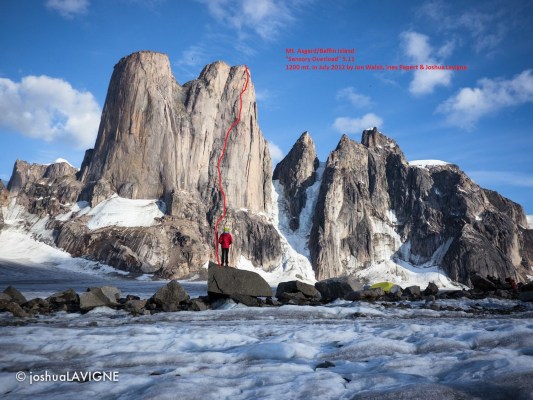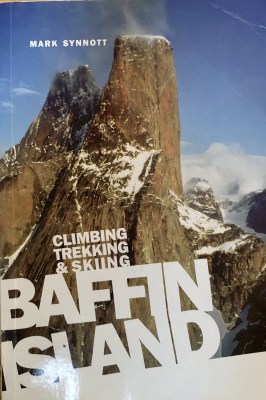Bodytext
In the summer of 2012, I head off, together with Jon Walsh and Joshua Lavigne, to the northeastern part of Baffin Island, the fifth largest island on the planet.
Arrival at Summit Lake at the end of the second day stage. Looking back at Weasel Valley. Gigantic cliffs piled up on both sides of the valley. We leave Mount Thor and Mount Breidalvik behind us. Our ultimate destination, Mount Asgard, has concealed itself for a long time.

Whereas one can rely on pleasant and short slopes in the Big Wall Mekka Yosemite Valley, one has to reserve a lot more time for the great walls on Baffin Island. The reward: a real adventure in a remote and secluded region.

Passing through Iqualuit, we reach the town of Pangnirtung, with its 1,500 inhabitants. From there, we take a fishing boat travelling 30 kilometres across the fjord, before continuing on foot with a lot of luggage across the moraine countryside towards Mount Asgard, along the Weasel Valley in the Auyuittuq National Park. I have a lot of respect for the demanding, freezing glacial streams that we have to conquer.

Baffin Island‘s landscape is simply unique. Scant, without any trees and with the exception of a couple of weeks during the year, where the fjords are free of ice, it’s an area hostile to humans. Steep cliffs, as far as the eye can see. One can get lost in this almost endless glacial region. Quiet. Very beautiful. Timeless. Since the sun doesn’t sink during the summer months, we have daylight around the clock. My headlamp, a compulsory tool in my backpack, isn’t required for this adventure.
After a three-day hike, we reach the Turner glacier at the foot of Mount Asgard and set up our base camp. The hike is troublesome. When crossing the numerous glacial streams, with the force of the water, one has to be extremely careful. This is no place for slipping up. This does have one advantage of course: Endless amounts of drinking water of the highest quality is available. In 2008, when Jon Walsh was in this region climbing several peaks, he had his eyes on the northwest wall of Mount Asgard. Then, the only thing that prevented him from tackling it was the huge amount of snow at the time.

To warm up and get used to each other as a team, we climb Mount Loki, Baffin’s „Matterhorn“. Enjoying ideal conditions, we climb the route of a New Zealand team through the 700 metre high south pillar and reach the peak around midnight. We are probably the first to complete a free ascent of this route. Plenty of reason to be satisfied. Time and time again, our view wanders across to Mount Asgard. Was this the right decision to take? Maybe taking advantage of the good weather, we should have climbed our original aim, Mount Asgard? Doubtful.
Perfect hand and finger cracks alternate while climbing chimneys. Being able to experience the pure pleasure of climbing at a moderate level. Not until we reach the headwall, does the wall become steep.
Sensory Overload
We’ve decided to take a direct route on Mount Asgard, starting at the big toe at the base. For the fun of it, we are calling it the “seated start”.
„Our“ mountain with its distinctive, two-cylinder steeple silhouette is named after Asgard, the home of the Gods in Nordic mythology. Its 1,200-metre high rock face is regarded as one of the steepest and tallest in the world. What do we intend doing? The first ascent of the northwest wall of the South Towers, the one on the right side of both plateau peaks. In order to be fast and efficient, we decide on the following strategy: Three rope lengths will be led in one piece, either by Jon, Josh or me. One climber will follow using jumars on a rope going up and pulling the haulbag along. One further person will follow as usual with the somewhat lighter backpack. We commence at four o’clock and already reach the middle of the wall during the morning. Our aim is not to use any bolts. In the afternoon, falling rocks could be dangerous. We try to side step to the right, yet we can’t find a continuous crack system. Back we go. We bivvy under a protective rock shelter. We have to wait until the following morning for cooler temperatures.
Just for a moment, I enjoy the breathtaking view of the Turner glacier. We are situated in the middle of a heavenly, yet weird landscape.
I am grateful for every pitch in the leading climb. Then, I don’t have to drag the cumbersome backpack with me.
The outcome of climatic change can be seen. Whole rocks – retained for centuries thanks to permafrost –loosen up from the mountain due to the increasing temperatures during the summer months. I feel queasy. I am slightly nervous. That’s why I am extra careful climbing towards the peak. Thankfully, the quality of the cliff is a lot better further up.

A 100 metre long, very wide Off-With becomes the actual crux in the second part of the wall. To get up in complete exposure is nerve-racking and rather hard graft. We’ve only got one large Camalot with us. It’s my turn on the lead climb and I fight my way upwards. The preparation as a team, training on Mount Lok, has paid off. I’ve been with Jon Walsh on several routes already. I only got to know Josh here. The team is functioning excellently. As we are climbing in alpine style, we are only carrying the minimum amount of luggage.
This should enable us to reach the peak on the second day. For the twentieth time, we are having Pat Thai to eat, even here on the wall. At the last minute, all Jon was able to come up with were rice dishes.
Just below the summit, there is a radical change in the weather. An emerging storm makes our last two rope lengths difficult and we have no visibility on the peak. Except of a frozen chimney, and due to strong rain, a wet tension on the exit pitch, we are able to climb everything onsight. However, the happiness is somewhat limited, with worsening conditions, we are becoming increasingly worried. There’s no way that we can bivvy on the peak. It’s too windy and bitterly cold. We have to get off the mountain. We can’t find the way down through the south side of Mount Asgard because of the fog. We have to climb through the plate-like rugged terrain, which is dangerously wet and slippy, before staying there in a bivvy. Ludicrous: We’ve nothing left to drink. Even though it’s raining, we are dying of thirst. It’s not raining hard enough to be able to catch enough water.

By the time we arrive back at our camp, we’ve been away for 60 hours.
After the unexpectedly quick success on Mount Asgard, we plan to try one of the other walls on the way back through Weasel Valley. While passing thought Summit Lake, Jon receives the very sad news that his Father has passed away. Of course, we’ll accompany him on his way back. However, we have to be fast. That’s why we leave some gear behind, which will be picked up by skidoo in the winter. Off we go on an 18-hour walk back to the fjord, which we do in one push. Jon makes it back home in time for the funeral.
Hence, my report finishes with a successful yet sad chapter which I didn’t originally plan. Life tends to write its own stories. The expedition to Baffin Island was my most intensive one to date. From the first day in the wilderness, we could hear and see every sign of nature, regardless of its size. We had to be on constantly alert and on-guard from dangers like polar bears and falling rocks. On Baffin Island, we had to be 100% attentive from the very first to the very last step.

Facts
First Ascent in alpine style (3 Days)
Mount Asgard North West Face
Hight of the Face: 1200m
Difficulty: 5.11+ A1
Gear: Camalots, Nuts, Pitons
Decent: Via the south side (normal route)
